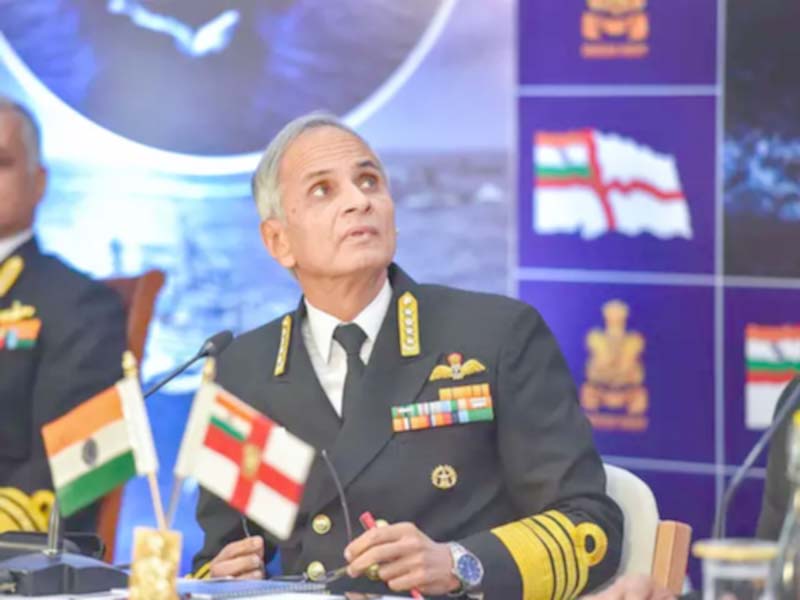By Bharat Karnad
The Narendra Modi government, having looked at all options, including “deep selection”, have apparently determined that the former Chief of the Naval Staff, Admiral Karambir Singh, who retired end-November 2021, is the best person to succeed the late General Bipin Rawat as Chief of the Defence Staff and Secretary, Department of Miltary Affairs. The announcement is likely to be made soon.
Unlike Rawat whose Pauri-Garhwal connections helped, Karambir is being brought in after considerable thought expended on his selection in the PMO and elsewhere, whence he will, in some respects, enjoy even greater backing in the inevitable bureaucratic turf battles and in fights over critical decisions.
When advocating Karambir’s appointment as CDS in a Dec 14, 2021 I had alluded to the “democratic” precedent of the US President, John F Kennedy, in 1961 installing a retired US Army Chief of Staff, General Maxwell Taylor, as his Chairman, Joint Chiefs of Staff. By way of Admiral Karambir’s qualifications, I had said that, as a naval helicopter pilot he had professional skills and the experience to empathize with, and to win the respect of, the air force and of the helicopter-equipped army aviation wing and hence of the army “the sort of background” few chiefs of staff have possessed, and which Rawat plainly lacked (leading to such boo-boos as his dismissal of the IAF as a “supporting arm”).
And the Admiral will have to root out from the CDS secretariat his predecessor’s antipathy to expeditiously and extensively establishing military bases on the Indian Ocean littoral and in archepelagic island nations (Maldives, Mauritius, northern Mozambique coast, etc) and to carving out a ready-use expeditionary element in the Indian armed forces to counter China’s fast-growing footprint, and effectively handling crises, in the region.
His naval helicopter background is pertinent. Unlike aviator naval chiefs in the past mostly carrier-borne fighter pilots (Arun Prakash, Sureesh Mehta) who flew combat aircraft off decks (VSTOL Harriers and, in Prakash’s case, also Hunter, as part of an IAF squadron during the 1971 War, in which stint he won the Vir Chakra), and with an attitude more akin to that of the “Fly-boys” in the air force, the no-nonsense Karambir flew Kamovs and, as CNS, wore his phlegmatism on his sleeve.
It is a trait that will stand him in good stead as CDS when he will be required to juggle the demands of the three armed services and of the Coast Guard, and to alight on inter se priorities where expenditure programmes are concerned, on the one hand and, on the other hand, to deal with the sometimes difficult political leaders (Modi, defence minister Rajnath Singh) and the civilian MOD bureaucracy, withut rubbing anyone too much the wrong way. What may have impressed the powers that-be is also the Admiral’s reputation as a “straight arrow” which, incidentally, will deter these other parties from pushing him on issues.
It will be interesting to see if as CDS, the Admiral stays with the Rawat plan for the consolidation of resources and “theaterization” of the numerous military commands, or tweaks it to make it more practicable. Many military stalwarts who have headed the Andaman & Nicobar Command (ANC), such as the former CNS, Admiral Arun Prakash, believe that an excellent working model for integrating command and control as well as the fighting and other military assets already exists in the Port Blair-headquartered ANC.
What needs to be done, they claim, is for it to be upscaled. Several such operationally integrated commands, they feel, would ease the movement towards a genuinely integrated Indian military, one in which the constituent services operate seamlessly. The trouble with the ANC, however, is that all the good it does in fosterig a genuine “joint” mindset and habit of working is frittered away as soon as officers on rotation in the Command revert to posts in their original service on the mainland when they have to buckle on the same old mental and attitudinal straitjackets. Even minimal loyalty to jointness is prevented from getting cemented by the extant career reward structure the Confidential Reports that count of the senior staff officers are written annually not by the Commander-in-Chief, ANC, but by the chiefs of the services they belong to.
Thus, promising careers have been cut short because senior officers were perceived by their chiefs as being too wedded to the concept of jointness or too supportive of the integrated setup than was deemed good for the parent service! This aspect of the ANC offers a peek into the promotion system that’s in desperate need of overhaul which, hopefully, the new CDS will undertake, pronto!
This is an absolute imperative if an integrated military is ever to bcome reality. Indeed, Karambir Singh should consider incorporating a scheme for awarding additional points to officers for pulling time in joint units/organizations, and to define minimum thresholds of “jointness points” beyond senior-Major or equivalent level as prerequisite for promotion to the next higher rank. Institutionalizing such promotion schema will provide just the incentive necessary for the officer corps in the three armed services to become more military jointness- and integration-minded.


